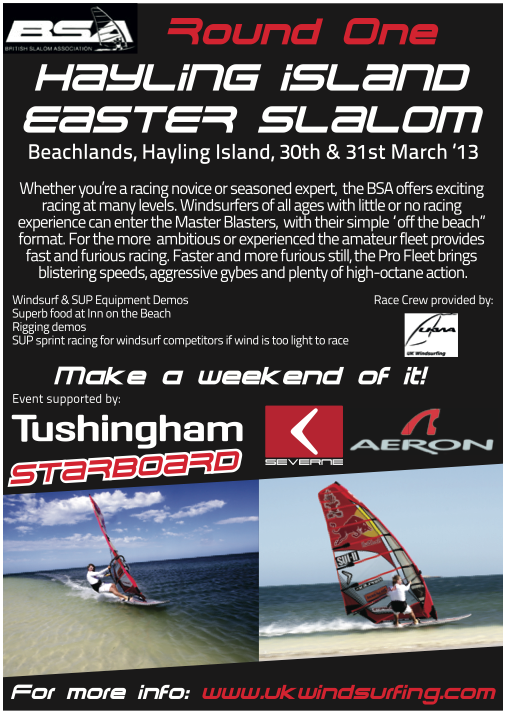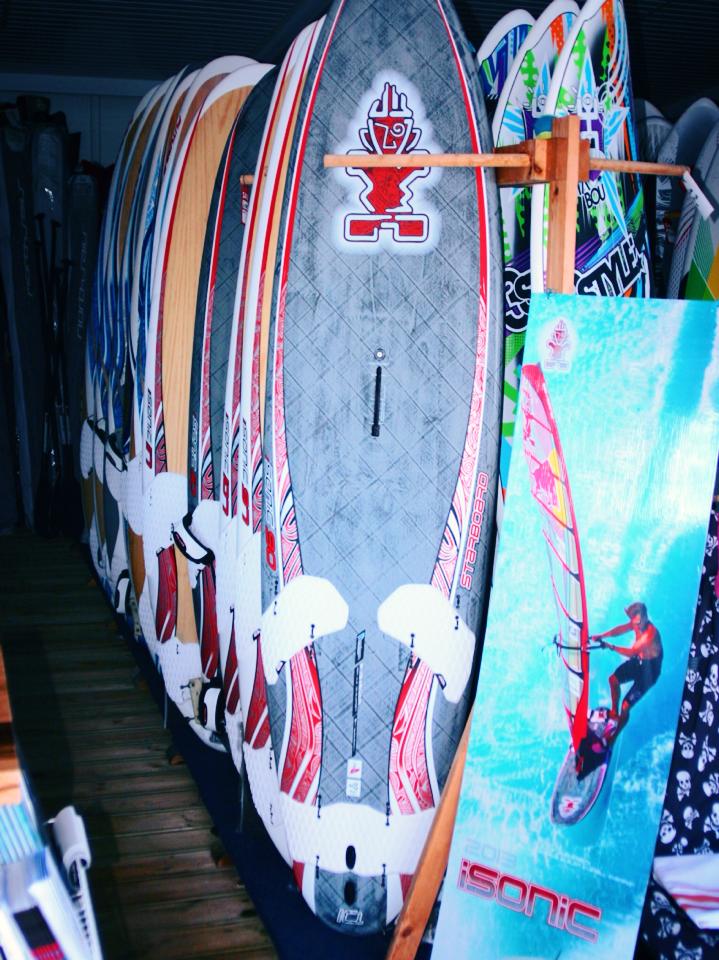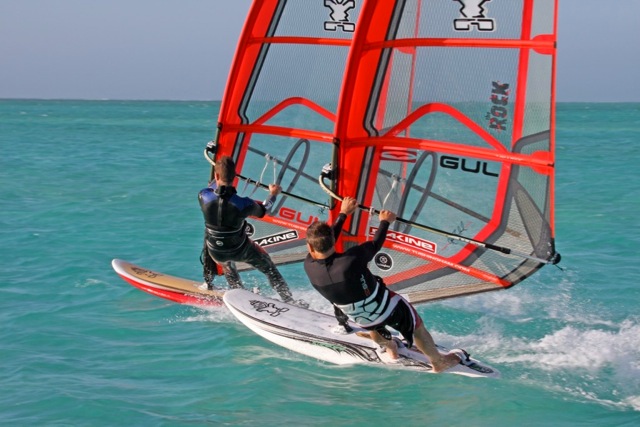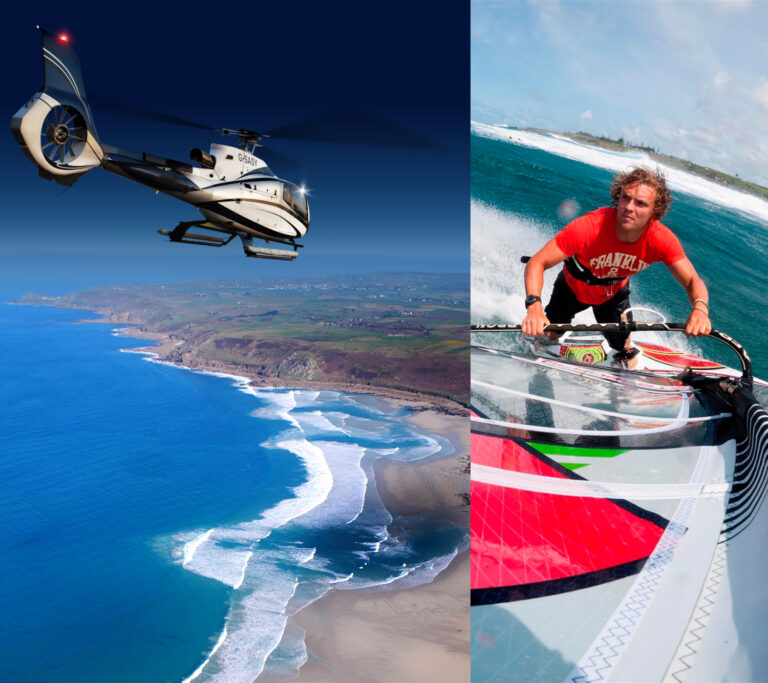Rather than having to uphaul your sail every time you leave the shore, beachstarting is a swift and very controlled way to get going; Simon Bornhoft joins Boards to talk you through the next technique in the Basics series.
Everyone should learn to beach start as soon as possible, as it’s a purely mechanical action and has little to do with your windsurfing sills. So find a gently shelving shoreline with, ideally with a cross-shore wind and walk out into just over knee depth water to give these skills a go.
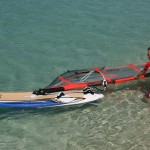
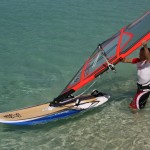
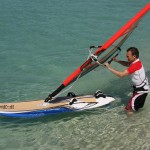
RIG ELEVATION ‘Slide & Glide’
Set the board up at approximately 90 degrees to the wind.
Never lift the mast straight up. Slide the mast horizontally so that your front arm sweeps the rig from a downwind position to an upwind position. Immediately hold the boom with both hands and look ahead to make sure the board is pointing very slightly upwind of a beam reach.
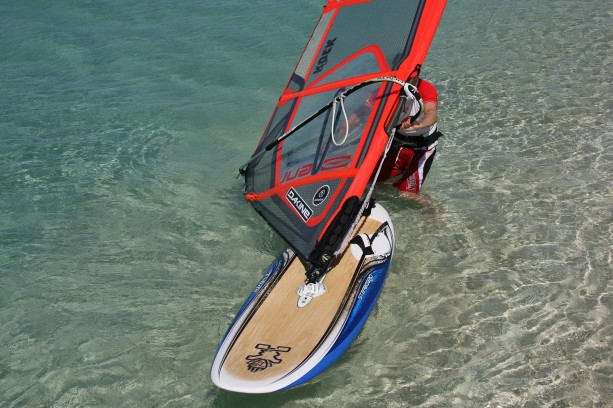
Steering Upwind
To steer upwind, drop the rig low and back towards the tail.
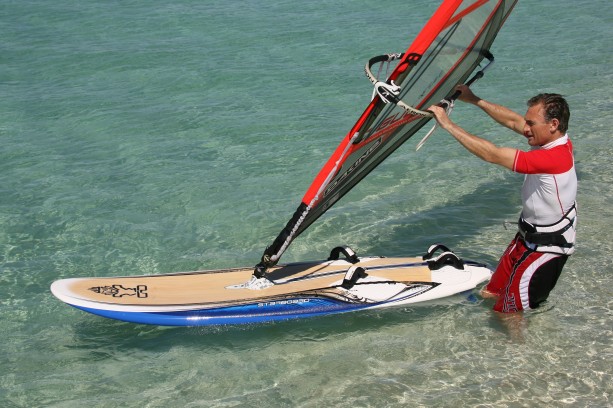
Steering Downwind
To steer downwind, raise the rig and push forward through the front arm.
In strong winds start your beachstart 5-10 degrees upwind of a beach reach.
In lighter winds start your beachstart 5-10 degrees downwind of a beam reach.
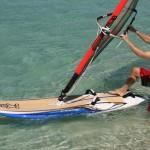
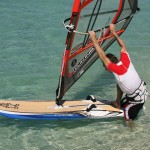
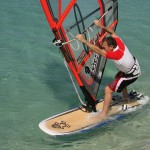
Beachstart 6 – Be strong with the front arm and get the rig as high as you can whilst ‘fanning’ the clew hand up and down to control and exhaust the rigs power. Place your back foot (pointing forward slightly) just to windward of the centerline (if you have straps, place it between the front and back straps).
Beachstart 7 – Make sure the back leg is bent and pulling the tail in towards the body, especially when you come up on to the board. To create extra lift, ‘twist’ the rig like a giant set of handlebars above your head. The front arm extends up and forwards while simultaneously the backhand pulls the clew in towards and up above the head.
Beachstart 8 – To coincide with the rig twist, flex that back leg and duck your head under the boom towards the mast base. Leave bringing the front foot up as late as possible, but when you do, place it up by the mast base and keep low in a wide Super 7 ‘drop and push’ stance.
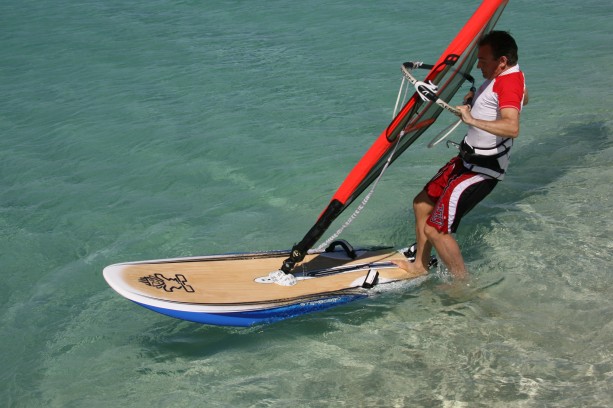
Never try to push the rig up, this backwinds the sail and sends you down!
Straightening the back leg when coming up onto the board often links into many of the aforementioned problems.
Getting pulled over the front? You’ve turned away from the wind too much.
Sail keeps coming down on top of you with no lift? You’re too far into wind or pulling too hard.
Keep falling back into the water? You’ve stood up or brought the front leg up too soon.
Getting pulled straight over the other side? You’re standing up too soon.
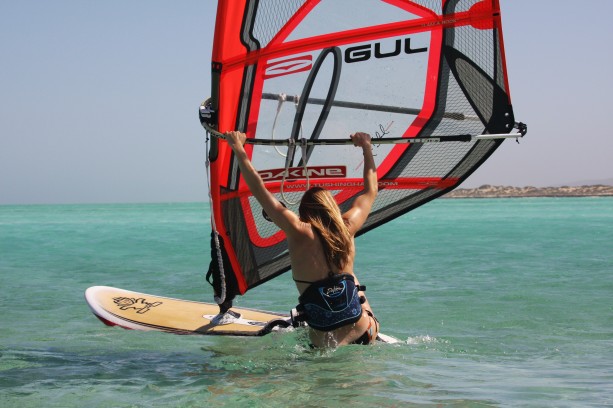
In lighter winds and on larger boards, you need to uphaul or beachstart to get going. In stronger winds, more experienced windsurfers develop a technique known as ‘waterstarting’. The power in the sail lifts them from the water up onto the board, much like a waterskier is pulled out of the water by a speedboat. Sub 115L boards have to be started this way as they have insufficient volume to be uphauled. Once you’ve mastered the basic beach start, try it in deeper water. In time you’ll be able to do it out of your depth. In windy venues and on fast track clinics, they teach waterstarting to relative beginners. It’s actually is a very mechanical move that has little to do with the rest of your windsurfing ability. Whilst it’s not essential keep windsurfing long term, waterstarting does opens up a whole world of opportunity to sail in stronger winds and on smaller boards.
Simple Summary
- Twist the rig up and forward
- Roll the head in and down towards the mast base
- Flex the back leg to pull the tail in underneath you
Simon Bornhoft Windwise www.windwise.net

